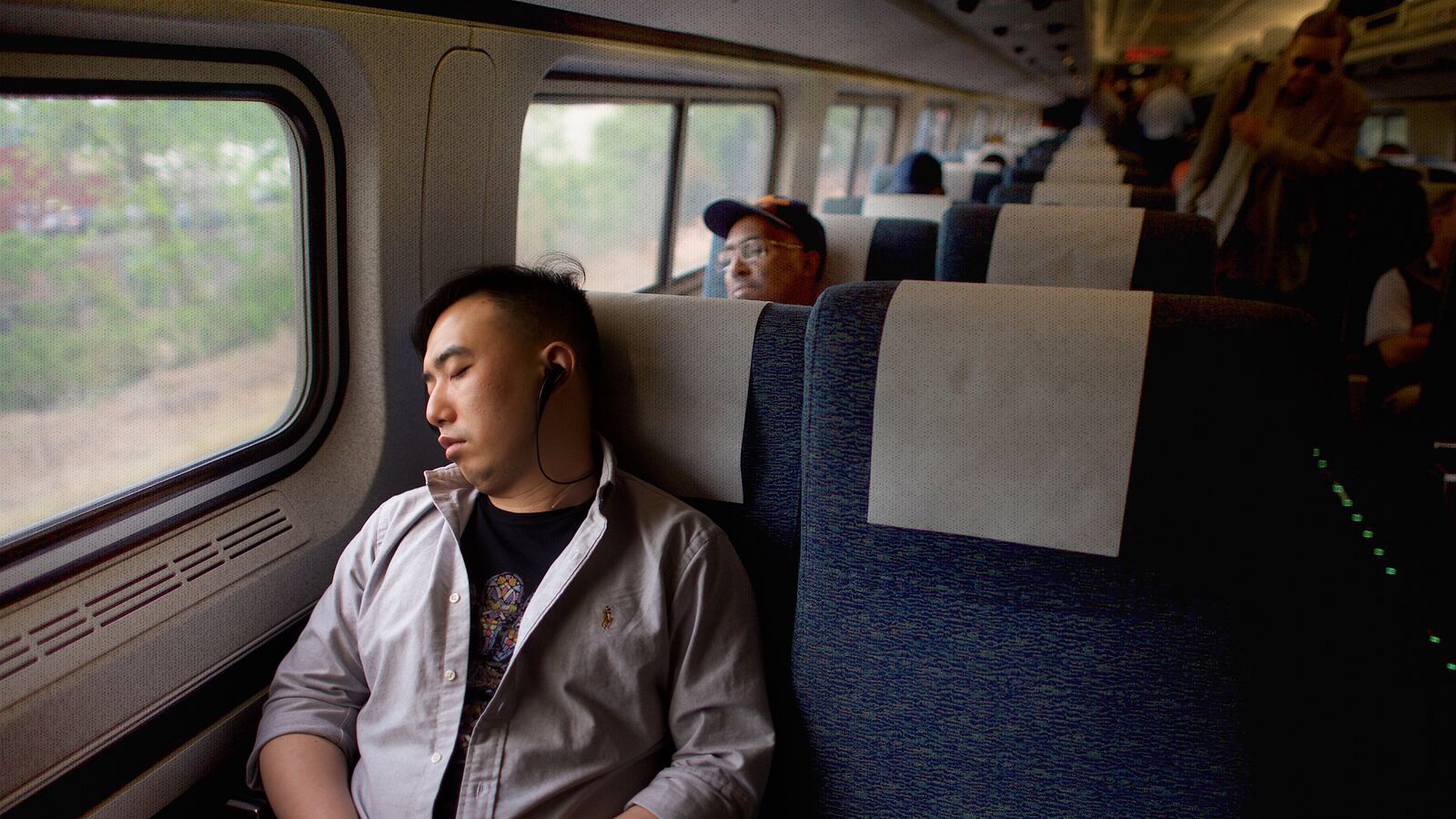An old saw has it that there are two kinds of people in the world: those who like to divide the world into two kinds of people and those who don’t. I’d always thought I belonged to the second category, but it turns out that there really are two kinds of people: those who want silence and those who apparently can’t imagine what that means.
When I lived in Houston I knew a woman who kept her radio on all day while she was at work, on the theory that her cats enjoyed listening to country music. I found this charming—I don’t know what the cats thought about it—but I didn’t live next door to her. Then I moved to Charlottesville, where my downstairs neighbor, who didn’t have so much as a houseplant, liked to leave his television on while he was at work. When I asked him about it he seemed disconcerted; it was just what he did. Maybe he thought it was what everyone did. I explained that I often worked at home and needed quiet, and he agreed to turn the TV off when he wasn’t there. I concluded that a strange relation to noise was a Southern thing.
I was wrong. When I moved back North I was at first delighted to discover Amtrak’s Quiet Car. But tensions run high in the Quiet Car, which is often not all that quiet. Because it’s defined as the Quiet Car, what noise occurs produces alarming levels of drama. The typical scenario runs as follows: everyone is sitting in absorbed silence; the conductor has announced that if you can hear this announcement you are sitting in the Quiet Car, no cellphones, no loud conversations, please be quiet; signs to the same effect hang from the ceiling. Suddenly the strains of “Eine Kleine Nachtmusik” are heard: someone’s cellphone has gone off. The person answers, in either normal or ostentatiously hushed tones. “I’m on the train,” the conversation begins. Everyone’s attention is galvanized; the atmosphere instantly becomes that of a mute lynch mob. The other passengers wait to see whether the offender will continue, and if so, to discern, silently, who among them will assume the role of enforcer. The conductor is never anywhere to be seen. If the conversation persists, inevitably someone will hiss, in tones of strangled fury, “Excuse me? This is the Quiet Car.” Often the guilty party will continue, oblivious, at which point the self-appointed spokesman for the aggrieved populace will repeat, with near-apoplectic rage, “EXCUSE ME, THIS IS THE QUIET CAR.” The hapless conversationalist looks around, saying, “Huh? Oh sorry” to the guardian of order and “Um, I’m in the Quiet Car so I should get off” into her phone.
People who choose to travel in the Quiet Car tend by definition to avoid direct conflict. They are there to be left alone, which accounts for the attitude of muted self-righteousness with which they confront transgressors. As the sociologist Erving Goffman observed in his 1957 paper “Alienation from Interaction,” “When the individual intentionally or unintentionally breaks a rule of etiquette, others present may mobilize themselves to restore the ceremonial order, somewhat as they do when other types of social order are transgressed.” It’s too bad Goffman is no longer around to study interaction rituals in the Quiet Car, which might more accurately be dubbed the Alienation From Interaction Car. On one recent trip I was sitting across from a man who periodically punctuated his otherwise silent enjoyment of whatever he was watching on his computer with shouts of laughter, accompanied by vigorous hand-clapping. Everyone stopped what they were doing to look over indignantly each time this happened, but no one confronted him, probably because he quieted down each time, doubtless also because he seemed a bit crazy.
Occasionally a stand-off occurs. In May 2011, a woman talked on her cellphone in the Quiet Car of a West Coast train for 16 hours straight—all the way from Oakland, California, to Salem, Oregon, braving murderous stares, complaints, conductor reminders, and at least one direct request, to which she responded “aggressively,” according to news reports. After 16 hours of this, her fellow passengers finally called the police. She was escorted off the train and charged with disorderly conduct, complaining afterward that she had been “disrespected.” One shudders to imagine the outcome if this had taken place on the Northeast Corridor.
The denizens of the Quiet Car are not simply the Mozart-appreciating upholders of civility they (OK, we) may like to imagine, stout defenders of the last remnants of civilization in an uncivil world. Quiet Cars owe their existence, after all, to the fact that almost everyone now travels in their own little bubble of pseudo-privacy, and feels entitled to act accordingly. The woman who endured angry stares for 16 hours no doubt felt disrespected because she was just talking on her phone and her conversation was no one else’s business. People in Quiet Cars who answer their cellphones often appear genuinely surprised when informed that their noise is, in fact, noise, as though their choice of this car marked them as the kind of people who like quiet and their conversations as by definition inoffensive.
A strange new etiquette has arisen with the ubiquity of portable connectivity devices, whereby people shouting intimately in public to invisible interlocutors are simply ignored by their fellow citizens, who are themselves earbud-defendedly staring into their own screens. On European trains every car is, at least in principle, quiet, with pictures of anthropomorphic slumbering cellphones and signs inviting riders to use their phones in designated exit areas only. These directives are routinely ignored, of course, but their presence serves as a reminder that the space is a shared one, where rules of civility should, at least, obtain. In the meantime, earplugs or noise-canceling headphones are recommended, especially in the Quiet Car.




